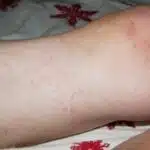Acrylic paint is one of the most versatile and widely-used mediums in arts and crafts. Its popularity, however, can pose a problem when it comes to accidental spills or stains on clothing. Acrylic paint is notorious for staining fabric and once dry, can be difficult to remove. Fear not, textile care experts have developed techniques to successfully remove acrylic paint from clothes.
Acrylic paint is a water-based medium that contains pigment particles suspended in an acrylic polymer emulsion. These pigments are designed to adhere to surfaces, making them durable and long-lasting once they dry. However, this also means that when acrylic paint comes into contact with fabric, it can penetrate the fibers and create a stubborn stain that can be challenging to remove without damaging the garment. As a textile care expert, it is important to understand the composition of acrylic paint and apply appropriate techniques to effectively remove stains while preserving the integrity of the fabric. In this article, we will share expert tips on how to get acrylic paint out of clothes.
Understanding Acrylic Paint Composition
Acrylic paint is a popular medium used for art and craft projects. It is made of pigment particles suspended in an acrylic polymer emulsion, which makes it water-soluble when wet but water-resistant once it dries. Acrylic paint comes in various colors and shades, and its composition follows the principles of color theory.
Color theory is the study of how colors interact with each other. In acrylic paint, each color has a unique composition of pigments that determine its hue, saturation, and brightness. Mixing different colors together can create new shades or tints, depending on their respective ratios. Understanding color theory is essential for effectively removing acrylic paint stains from clothes because it can help identify which pigments are present in the stain.
Apart from pigments, acrylic paint also contains medium additives that affect its texture and finish. These mediums include gloss, matte, metallic, or iridescent finishes that add visual interest to the artwork. The use of these mediums can also affect how easily the paint binds to fabric fibers and how difficult it is to remove stains from clothing. Therefore, knowing the type of medium used in the acrylic paint stain can aid in selecting an appropriate cleaning method for specific fabrics.
By understanding the composition of acrylic paints and their mediums, one can better identify which types of fabric are more susceptible to staining and what cleaning methods may work best for them. Identifying the type of fabric is crucial because different fabrics have varying levels of absorbency and react differently to cleaning agents. With this knowledge at hand, we can now proceed to identifying the type of fabric that needs to be cleaned to remove acrylic paint stains effectively.
Identifying The Type Of Fabric
Understanding the composition of acrylic paint is crucial in determining the best approach to take when removing stains from clothing. However, it’s also important to identify the type of fabric before attempting any cleaning process. Different materials react differently to cleaning agents, and some may be more delicate than others. Before pre-treating the stain, one should know what kind of fabric they’re dealing with.
Fabric types for painting vary, but common options include cotton, polyester, and denim. These materials absorb acrylic paint differently, and their texture influences how easy or difficult it will be to remove stains. Cotton fabric absorbs paint more easily and may require different cleaning methods than synthetic fibers such as polyester. The first step in identifying clothing materials is checking the label on the garment for washing instructions.
Once one has identified the type of fabric they’re dealing with, they can proceed to pre-treat the stain before washing. Pre-treating involves applying a cleaning agent directly to the stain before washing it off completely. One should use an appropriate cleaner that won’t damage or discolor the clothing material. In some cases, a simple solution of warm water and mild detergent may suffice; however, other stains may require stronger cleaning agents such as hydrogen peroxide or rubbing alcohol.
Identifying the type of fabric is key to removing acrylic paint stains from clothes successfully. Different fabrics require unique approaches when it comes to stain removal. While cotton may absorb paint quickly and deeply into its fibers, synthetic fibers like polyester offer a slicker surface that repels liquids better. When pre-treating a stain on clothing material, one should always use an appropriate cleaner that won’t harm or discolor it while ensuring that all traces of paint are removed in the process.
Pre-Treating The Stain
Pre-treating the stain is crucial in achieving effective stain removal. Failure to do so may result in a permanent stain that could ruin your favorite garment. Therefore, it is important to take immediate action once you notice the acrylic paint on your clothes.
There are various pre-treating techniques you can use to remove acrylic paint stains from your garments. One effective method is to apply a small amount of rubbing alcohol onto the affected area using a cotton ball or swab. This will help dissolve the paint and make it easier to remove. Alternatively, you can also use dish soap and warm water to gently scrub the stained area before washing it off.
It is important to note that different fabrics require different pre-treatment methods, as some may be more delicate than others. Thus, before applying any pre-treatment method, ensure that you check the care label on your garment for any specific instructions on how to handle stains. In the subsequent section, we will discuss how using cold water can aid in removing acrylic paint stains effectively without causing damage to your clothes.
Using Cold Water
- To effectively remove acrylic paint from clothing, it is recommended that the garment be soaked in cold water for at least an hour.
- When soaking, it is important to check the garment periodically for any remaining paint and repeat the process if necessary.
- After soaking, the garment should be rinsed in cold water and then washed in the washing machine according to the care instructions.
- To ensure all of the paint is removed from the fabric, it is recommended that a second cold water rinse be performed before drying the garment.
Soaking In Cold Water
Acrylic paint stains on clothes can be quite stubborn and difficult to remove. However, using cold water to soak stained clothes can help to loosen the paint and make it easier to remove. The benefits of soaking in cold water are plenty, and knowing how long to soak the garment can make all the difference.
Soaking in cold water is an effective method for removing acrylic paint stains from clothes because it helps to break down the paint particles that have adhered to the fabric fibers. This process helps to loosen and dissolve the stain, making it easier to wash away. Additionally, soaking in cold water is a safe alternative as hot water may cause some types of fabric to shrink or fade. When soaking clothes, ensure that they are completely submerged in the water for best results.
The duration of soaking depends on how deep and stubborn the stain is. For light stains, soaking for 30 minutes may suffice while deeper stains may require several hours or overnight soaking. It is important not to let the garment dry during this process as this could set the stain further into the fabric making it harder to remove. Once soaked for an appropriate amount of time, gently rub or brush off any remaining stain before washing with a mild detergent in cold water. By following these steps, you should be able to effectively remove acrylic paint stains from your clothes without damaging them.
Cold Water Rinse
Now that we have discussed the benefits of soaking in cold water to remove acrylic paint stains from clothes, let us move on to the next step: Cold Water Rinse. After soaking the garment, it is important to rinse it thoroughly with cold water. This helps to remove any remaining paint particles and detergent residue from the fabric fibers.
To properly rinse acrylic paint out of clothes, start by filling a basin or sink with cold water. Then, submerge the garment and gently agitate the water to ensure that all traces of paint are removed. It is important not to use hot water as this can cause damage to certain types of fabrics. Once rinsed, gently squeeze out excess water and hang or lay flat to air dry.
Of course, prevention is always better than cure when it comes to removing stubborn stains like acrylic paint. To avoid getting these stains in the first place, consider wearing protective clothing like aprons or coveralls while painting. Additionally, keep a supply of wet wipes or a damp cloth nearby for quick cleanups in case of any spills or drips. By taking these simple precautions, you can save yourself time and effort in removing tough stains from your favorite clothes.
Using Hot Water
Another method to remove acrylic paint from clothing involves using hot water. This method is ideal for removing dried-on paint stains. Begin by setting a large pot of water on the stove and bring it to a boil. Once the water is boiling, carefully place the stained garment into the pot, making sure it is completely submerged. Allow the garment to soak for 30 minutes.
After soaking, remove the garment from the pot and let it cool down a bit before attempting to remove any remaining paint residue. If there are still visible stains, use a steam cleaner to blast away any remaining paint particles. Hold the nozzle about six inches away from the fabric and move it around in circular motions until all traces of paint have been removed. Be careful not to hold the nozzle too close as this can scorch or damage delicate fabrics.
Next up: Using Dish Soap…
Using Dish Soap
Continuing from the previous section, using hot water to remove acrylic paint stains can be effective, but for stubborn stains, dish soap may provide a more powerful solution. Common dish soaps to use for paint removal include Dawn and Seventh Generation. Mixing a small amount of either brand with warm water can help break down the pigment and loosen the stain from the fabric.
However, if you do not have access to these brands or prefer more natural alternatives, there are effective dish soap alternatives for acrylic stains. One such option is vinegar mixed with baking soda. This combination can create a paste-like substance that can be applied directly to the stain and left to sit for 15-20 minutes before being washed off. Another alternative is hydrogen peroxide mixed with dish soap. This mixture should be applied directly to the stain and left for 5-10 minutes before washing.
When using dish soap or any other cleaning solution on fabric, it is important to always spot test in an inconspicuous area first to ensure that it does not cause damage or discoloration. Additionally, it is recommended to avoid using bleach as it can damage both the fabric and the color of the garment. In the next section, we will explore another method for removing stubborn acrylic paint stains – using rubbing alcohol.
Using Rubbing Alcohol
To effectively remove acrylic paint stains from clothes, using rubbing alcohol is a popular method that shows promising results. Rubbing alcohol is a solvent that dissolves the paint and makes it easier to remove from the fabric. However, it’s important to note that rubbing alcohol should be used with caution as it can cause discoloration or damage to certain fabrics.
Before using rubbing alcohol, it’s crucial to test a small, inconspicuous area of the garment for any adverse reactions. If there are no issues, proceed by following these steps:
- Dab a small amount of rubbing alcohol onto the stained area with a clean cloth or cotton ball.
- Gently rub the stain in circular motions until it starts to lift off the fabric.
- Rinse the garment under cold water to remove any remaining paint and rubbing alcohol.
- Wash the clothing in cold water with mild detergent and air dry.
While rubbing alcohol is an effective solution for removing acrylic paint stains, there are alternatives such as hairspray or nail polish remover that work similarly. However, these options also contain harsh chemicals and should be used with caution and only on compatible fabrics.
In order to ensure safety when using rubbing alcohol or any other solvent for stain removal, always wear gloves and work in a well-ventilated area. It’s also important to read and follow all safety precautions listed on the product packaging before use. With these precautions taken into consideration, you can successfully remove acrylic paint stains from your clothing without causing further damage or harm to yourself or your garments.
Moving forward, another effective method for removing acrylic paint stains involves the use of vinegar which we will discuss in detail in the subsequent section.
Using Vinegar
- The removal of acrylic paint from clothing is possible with the use of vinegar.
- Acrylic paints are known to form strong stains due to its water-resistant properties, making it difficult to remove without the right cleaning solution.
- Vinegar is an effective solution to cleaning acrylic paint due to its acidity, which helps to break down the paint and its stain.
- It is important to follow the appropriate steps while removing the paint with vinegar, in order to prevent any damage to the fabric of the clothing.
Removing Acrylic Paint With Vinegar
Acrylic paint is a popular medium used in many art and craft projects. However, it can be frustrating when the paint accidentally gets on your clothes. Fortunately, vinegar can be an effective solution for removing acrylic paint stains from clothing.
Vinegar is a natural cleaning agent that has been used for centuries to clean and disinfect various surfaces. It can also be used as a paint remover due to its acidic properties. To remove acrylic paint with vinegar, start by soaking the affected area in white vinegar for at least 30 minutes. This will help loosen the paint from the fabric. After soaking, use a brush or cloth to gently scrub the stain until it starts to lift. Rinse the garment thoroughly with cold water and repeat the process if necessary.
Using vinegar as a paint remover has many benefits over traditional chemical cleaners. Firstly, it is an eco-friendly option that does not contain harsh chemicals that can harm both humans and the environment. Secondly, it is readily available in most households and inexpensive compared to commercial cleaning products. Lastly, vinegar is versatile and can be used for many other household cleaning tasks like removing soap scum, deodorizing garbage disposals, and disinfecting surfaces.
In conclusion, using vinegar as a paint remover is an effective solution for removing acrylic paint stains from clothing. Its natural cleaning properties make it an eco-friendly option that is readily available in most households. Using natural cleaning solutions such as vinegar not only protects our environment but also helps us save money while keeping our clothes looking clean and fresh.
Cleaning Acrylic Paint Stains With Vinegar
As a textile care expert, it is essential to know the best ways to clean various stains from fabrics. Acrylic paint stains can be particularly challenging to remove, especially on clothing. However, vinegar has been proven to be an effective solution for removing acrylic paint stains from clothes. The benefits of using vinegar for cleaning are numerous, making it a popular choice over other chemical-based cleaning agents.
One of the major benefits of using vinegar for cleaning is its natural and eco-friendly properties. Unlike traditional chemical cleaners that contain harmful substances that can harm both humans and the environment, vinegar is safe and non-toxic. Additionally, vinegar is readily available in most households and inexpensive compared to commercial cleaning products.
When it comes to removing acrylic paint stains from clothing, vinegar has proven to be more effective than other cleaning agents. Its acidic properties help loosen the paint from fabric fibers, making it easier to remove with gentle scrubbing. Vinegar is also versatile and can be used for many other household cleaning tasks like removing soap scum, deodorizing garbage disposals, and disinfecting surfaces.
In summary, using vinegar as a cleaning agent has numerous benefits over traditional chemical cleaners. Its natural and eco-friendly properties make it a safer option that is readily available in most households. Furthermore, when it comes to removing acrylic paint stains from clothing, vinegar has proven to be more effective than other cleaning agents due to its acidic properties. As textile care experts, we should always consider using natural solutions like vinegar when caring for fabrics and textiles.
Using Ammonia
Ammonia is a common household cleaning agent that can effectively remove acrylic paint stains from clothing. It works by breaking down the chemical bonds of the paint, making it easier to lift off the fabric. However, before using ammonia, it is important to take some safety precautions to avoid any potential harm.
One alternative to ammonia is vinegar, which can also be effective in removing acrylic paint stains. Vinegar is a milder option than ammonia and does not pose as much of a risk to your health or the environment. To use vinegar, simply mix equal parts water and vinegar and apply it directly onto the affected area. Allow it to soak for 30 minutes before washing as usual.
When working with ammonia, always wear gloves and work in a well-ventilated area. Avoid mixing ammonia with other cleaning agents or bleach as this can produce harmful fumes. If you have sensitive skin or respiratory issues, consider using an alternative method for removing acrylic paint stains from your clothes.
Transition into subsequent section about ‘using hydrogen peroxide’:
Another effective method for removing acrylic paint stains from clothing is using hydrogen peroxide. This method may be gentler on fabrics compared to ammonia while still being effective in lifting out the stain.
Using Hydrogen Peroxide
While ammonia has been traditionally used as an effective solution to remove acrylic paint from clothes, it is not the only alternative method available. Another option you can consider is the use of hydrogen peroxide. This common household item is known for its bleaching and disinfecting properties but can also work wonders in removing stubborn stains like acrylic paint.
Before using hydrogen peroxide, ensure that you take proper safety precautions. It is highly recommended to wear gloves and a face mask while handling this chemical. Additionally, test a small inconspicuous area of the garment first to check for any adverse reactions such as discoloration or damage to the fabric.
To use hydrogen peroxide, mix equal parts of it with water and apply it directly onto the stain. Allow it to sit for 10-15 minutes before rinsing thoroughly with cold water. Repeat this process until the stain fades away completely. Once done, wash your clothes as usual.
Using alternative methods like hydrogen peroxide can be an effective way of removing acrylic paint from clothes without having to spend too much money on commercial stain removers. However, always remember to take necessary precautions when handling chemicals and test a small area first before applying it onto the entire garment. In case these methods fail, you can consider using commercial stain removers which are specially formulated to remove tough stains from clothing fibers.
Using Commercial Stain Removers
Commercial stain removers are a popular choice for removing acrylic paint stains from clothes. These products are formulated to break down and dissolve different types of stains, including stubborn ones like paint. However, their effectiveness can vary depending on the product’s active ingredients and concentration.
Effectiveness comparisons can be made among commercial stain removers by looking at their advertised claims and customer reviews. Some products may be better suited for certain types of fabrics or paint stains than others. It is important to read the label instructions carefully and follow them closely for best results. Additionally, performing a spot test on a small, inconspicuous area of the garment before applying the remover to the entire stain can prevent any potential damage.
Safety considerations should also be taken into account when using commercial stain removers. These products often contain harsh chemicals that can irritate the skin or cause respiratory issues if inhaled. Wearing gloves and protective clothing while handling the product is recommended. Proper ventilation in the room where the remover is being used is also important to avoid inhaling any fumes.
- Look for eco-friendly or natural alternatives to traditional commercial stain removers.
- Consider using a pre-treatment solution specifically designed for acrylic paint stains.
- Use caution when selecting a product with strong chemicals, especially if you have sensitive skin or allergies.
With these effectiveness and safety considerations in mind, using a commercial stain remover can be an effective way to remove acrylic paint stains from clothes. However, there are other methods available that may produce similar results without exposing oneself to potentially harmful chemicals. The next section will explore how to use a washing machine to remove acrylic paint stains from clothes.
Using A Washing Machine
When dealing with acrylic paint stains on clothes, it is essential to act quickly to avoid the stain setting in. One effective way of removing these stains is through the use of a washing machine. However, before tossing your garment into the washer, be sure to check the label for care instructions and make sure that it is safe to wash.
To start, turn your garment inside out to protect any designs or embellishments from being damaged or faded during the wash cycle. Then, pre-treat the stain by applying a small amount of liquid detergent directly onto the affected area and gently rubbing it in with your fingers. You may also opt to use alternative methods such as vinegar or rubbing alcohol for tougher stains.
Once pre-treated, place your garment into the washing machine with similar colors and fabrics. Use warm water and a regular cycle with an extra rinse option if available. Avoid using hot water as this can cause acrylic paint to set in even further. If you are hesitant about using a washing machine, consider trying hand washing techniques instead.
Hand washing involves soaking your garment in warm soapy water for at least 30 minutes before rinsing thoroughly until no more soap suds appear. Repeat as necessary until the stain has been lifted entirely. Whichever method you choose, always air dry your clothing afterward as using a dryer can cause any remaining pigment to set permanently into the fabric.
Using A Dryer
- To effectively remove acrylic paint from clothing, it is important to pre-treat the stain before placing it in the dryer.
- Before running the dryer, ensure the clothing is properly sorted, as certain fabrics may require a different setting.
- Additionally, check the care label to determine the correct temperature setting for the item.
- As acrylic paint can be difficult to remove, applying a spot remover directly to the stain can help loosen the paint before placing it in the dryer.
- Once the stain has been pre-treated, the item can be placed in the dryer.
- After a regular drying cycle, the clothing should be checked to ensure all the paint has been removed.
Pre-Treating The Stain
Acrylic paint stains on clothes can be a real headache. However, with the right approach, it is possible to get rid of them effectively. When it comes to pre-treating the stain, there are several steps you can take to increase your chances of success.
Choosing detergents that are specifically designed for removing tough stains is essential. These types of detergents contain enzymes that break down the stain and make it easier to remove during the washing process. Before applying the detergent, use a spoon or knife to scrape off any excess paint that has not yet dried. This will prevent it from spreading further into the fabric.
Precautions should be taken when dealing with acrylic paint stains. Avoid using hot water as this can cause the stain to set in permanently. Instead, use lukewarm water and gently blot the stain with a clean cloth until most of it has been removed. If necessary, you can also try applying rubbing alcohol or nail polish remover directly onto the stain before washing as these substances have been known to break down acrylic paint effectively.
In conclusion, pre-treating an acrylic paint stain on clothing requires careful attention and specific techniques. By choosing the right detergent and taking precautions such as avoiding hot water and scraping off excess paint, you can increase your chances of removing the stain successfully. Remember to always read care labels on clothing before attempting any form of treatment, and if in doubt seek professional advice from a textile care expert.
Preparing The Dryer
When it comes to drying clothes, preparing the dryer is just as important as washing and treating stains. A clean dryer is essential for maintaining the quality of your clothing and avoiding heat damage. Before using the dryer, make sure to remove any lint or debris from the lint filter. This will ensure that hot air can circulate freely and dry your clothes effectively.
Another important precaution when using a dryer is to avoid overheating the fabric. High temperatures can cause shrinkage, fading, and even damage to delicate fabrics. To prevent this, always check care labels on clothing before putting them in the dryer. If in doubt, use a lower heat setting or hang the clothes to air dry instead.
It’s also a good idea to periodically clean the inside of your dryer with a damp cloth or vacuum cleaner. This will help remove any excess lint or dust that may have accumulated over time. By taking these simple steps to prepare your dryer before drying your clothes, you can ensure that they come out looking their best without any risk of heat damage or other problems.
Drying The Item
After preparing the dryer, it is important to consider the best way to dry your clothes. Air drying and machine drying are two common options, each with their own advantages and disadvantages. Air drying is a more environmentally friendly option that can help extend the life of your clothing by reducing the risk of shrinkage or damage from high heat. However, it may take longer and requires adequate space for hanging or laying out clothes. Machine drying, on the other hand, is faster and more convenient for busy lifestyles. It also offers options such as timed cycles and temperature control to customize the drying process for different fabrics.
When using a dryer, it may be tempting to speed up the process by using a hairdryer or other heat source on damp clothing. However, this can be dangerous and cause damage to both the clothing item and the appliance being used. High heat from a hairdryer can cause shrinkage or even start a fire if directed at flammable materials such as fabric softener sheets or lint in the dryer. It is always best to follow manufacturer instructions for using your dryer and avoid using alternative methods that may cause harm.
If you choose to air dry your clothes, there are additional tips to ensure they dry properly without damage. Hanging items on hangers or laying them flat can help maintain their shape while allowing air circulation. Avoid direct sunlight which can cause fading, especially for brightly colored items. Also, make sure clothes are completely dry before folding or storing them away to prevent mildew or musty odors. By taking care when choosing how to dry your clothes and following proper techniques, you can keep them looking great for longer periods of time!
Spot Testing Before Treatment
While using a dryer might seem like the easiest solution for removing acrylic paint from clothes, it is important to note that this method can actually make the stain worse. Heat from the dryer can set the stain, making it more difficult to remove later on. It is best to avoid using a dryer until after the stain has been fully treated.
Before attempting any treatment, it is crucial to spot test an inconspicuous area of the garment first to ensure that the treatment will not cause any damage or discoloration. This step may seem tedious, but it can save you time and money in the long run by preventing further damage.
Common mistakes when treating acrylic paint stains include using hot water or rubbing too vigorously. Hot water can set the stain and make it harder to remove, while vigorous rubbing can damage delicate fabrics and spread the stain further. It is important to use cool water and gently blot or dab at the stain with a clean cloth or paper towel.
To prevent future stains, consider wearing protective clothing or aprons when working with acrylic paint. It is also helpful to have a designated work area with a drop cloth or plastic covering. In case of accidental spills, have cleaning supplies readily available for quick action. By taking these preventative measures, you can avoid future headaches and prolong the lifespan of your clothing.
Preventing Future Stains
Preventing future stains is crucial in maintaining the quality and longevity of your clothes. It is essential to adopt measures that will help prevent or minimize the occurrence of stubborn stains, such as acrylic paint. Here are some tips on how to prevent future accidental spills.
Firstly, one should choose an appropriate detergent when washing their clothes. Certain detergents contain harsh chemicals that can damage the fabric’s fibers, making it more susceptible to staining. It is best to opt for mild detergents that are specifically designed for delicate fabrics. These detergents work gently on the fabric and remove any dirt or grease without affecting its quality.
Secondly, proper storage techniques can also help prevent future stains. Clothes should be stored in a clean and dry place away from direct sunlight. This prevents the growth of bacteria or mold that could cause discoloration or staining on the fabric. Additionally, clothes should be hung up or folded neatly to prevent them from getting crushed or wrinkled, which could result in creases that make it difficult to remove stains.
Lastly, investing in protective clothing such as aprons and gloves can help protect your clothes from accidental spills during activities such as painting or cooking. These protective garments act as barriers between the fabric and any potentially harmful substances, preventing them from penetrating and causing irreparable damage.
By following these simple steps, you can maintain the quality of your clothes while preventing stubborn stains from ruining them over time. Remember to choose an appropriate detergent when washing your clothes, practice proper storage techniques, and invest in protective clothing where necessary. Adopting these measures will go a long way in ensuring your wardrobe remains stain-free for years to come.
Conclusion
Acrylic paint stains on clothes can be a nightmare to remove, but with the right method and tools, it is possible to save your clothing. Understanding the composition of acrylic paint and identifying the type of fabric are crucial steps in effectively removing the stain. Pre-treating the stain with a suitable solvent such as rubbing alcohol or dish soap before washing can also help to break down the pigments.
When trying to remove acrylic paint from clothes, it is essential to spot test any cleaning solution before using it on the entire garment. This will prevent further damage and ensure that the treatment is safe for both the fabric and color. In addition, always use cold water when treating stains as hot water can cause acrylic paint to set permanently into the fibers.
For example, if you accidentally spill red acrylic paint on your favorite white cotton t-shirt, pre-treat the stain with rubbing alcohol before washing it in cold water. If there is still some residue left after washing, try using a mixture of vinegar and baking soda or dish soap and warm water to remove it completely. Remember not to dry your garment until all traces of paint have been removed as heat can set stains permanently.
As textile care experts, we recommend taking preventative measures such as wearing protective clothing or aprons when working with acrylic paints. This will reduce the risk of spills and minimize potential damage to your clothing. By following these guidelines, you can successfully remove acrylic paint stains from your clothes while keeping them looking their best for longer.
Image Credits
- “Acrylic Fluid Painting Effects” by markchadwickart (featured)





























